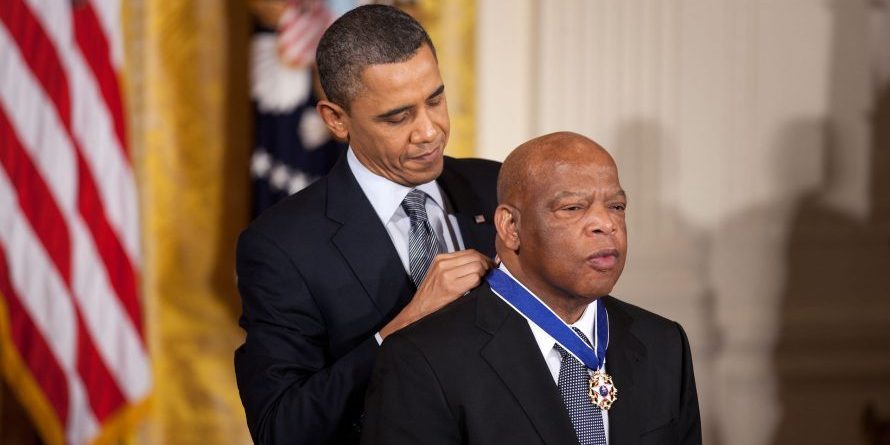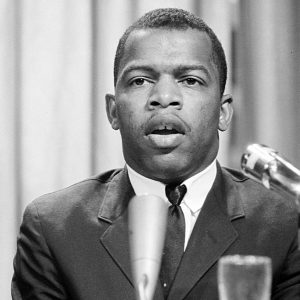I appeal to all of you to get into this great revolution that is sweeping this nation. Get in and stay in the streets of every city, every village and hamlet of this nation until true freedom comes, until the revolution of 1776 is complete.
- John Lewis, "Speech at the March on Washington" on August 28, 1963.
Today, we remember Civil Rights leader and Congressman John Lewis for his contributions to furthering equity and social justice. Lewis passed away Friday, July 17, 2020, after a six-month battle with cancer. In his memory, our staff have put together a list of titles (see below) featuring March, the award-winning, #1 bestselling graphic novel trilogy and other titles that recount his life.
Lewis was born in Troy, Alabama on February 21, 1940. His parents were sharecroppers who leased the land they farmed. From an early age, Lewis experienced racism and segregation living in the South, a disparity he grew more aware of while visiting family in the North. Inspired by the words of Dr. Martin Luther King, Jr. and the actions of Rosa Parks, Lewis' lifetime of activism began when he was just 15 years old. The first book in the graphic novel trilogy March (linked below) details Lewis' early life and activism.
Black voter rights and racial equality were central to Lewis' work as a young civil rights activist and remained so throughout his career working in government as an elected official. Lewis believed in and practiced nonviolence, even as he endured numerous instances of police brutality and violence while standing up for freedom and justice. Following his first arrest at a sit-in protest in Nashville, Lewis described his engagement as what would become a lifetime of getting in "good trouble, necessary trouble." It was a penchant that has come to define his legacy, and he consistently encouraged others to do the same.
Books Two and Three of the March trilogy continue to detail Lewis' civil rights activism. Lewis was one of the thirteen original Freedom Riders, as well as one of the "big six" organizers of the March on Washington, where at 23 years old he was the youngest organizer to give a speech, opens a new window to a crowd of over 250,000 marchers. He was a leader of the "Mississippi Freedom Summer" and the Selma to Montgomery marches, the latter of which also saw his involvement in the "Bloody Sunday, opens a new window" protest. Upon reaching the end of the Edmund Pettus Bridge in Selma, Alabama, the marchers were stopped by some 150 state troopers, who ordered the demonstrators to disperse. The group of peaceful protesters were met with clubs, bullwhips, and tear gas. Lewis himself endured a skull fracture and was one of 58 protesters treated for injuries. It was the momentum of these efforts that led to the passing of the Voting Rights Act of 1965.
John Lewis was first elected as a congressman to represent the State of Georgia in 1986, where he kept up the fight for justice through his work in government. He went on to repeatedly win re-election to Congress, serving for a total of nearly 34 years prior to his passing. Congressman Lewis organized sit-in protests centered around gun-safety legislation and immigration reform. He spent 15 years introducing and re-introducing the bill that went on to create the National Museum of African American History and Culture , opens a new windowin Washington, D.C. when it was finally passed in 2003. These, along with his many, many other battles, from civil and voting rights to health care and more, earned him the designation, "the conscience of Congress."
Today's Black Lives Matter protests continue the fight for social and racial justice, ignited and inspired by activists like John Lewis from the Civil Rights Movement. It is through everyone's efforts to get in "good trouble" that John Lewis' legacy lives on, and he will continue to inspire generations of activists to come.




Add a comment to: Remembering John Lewis